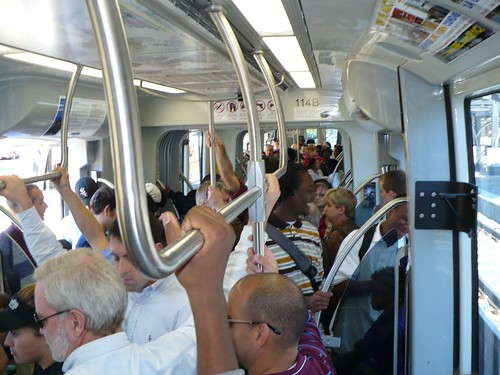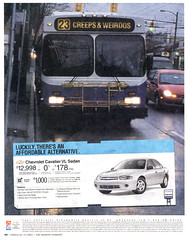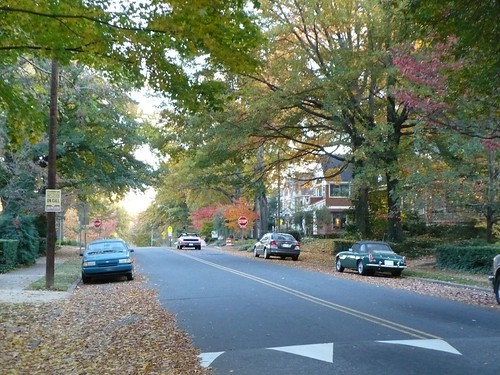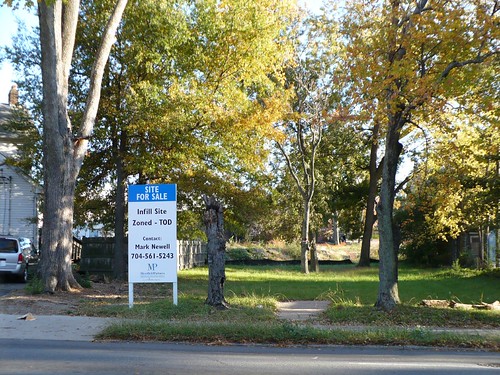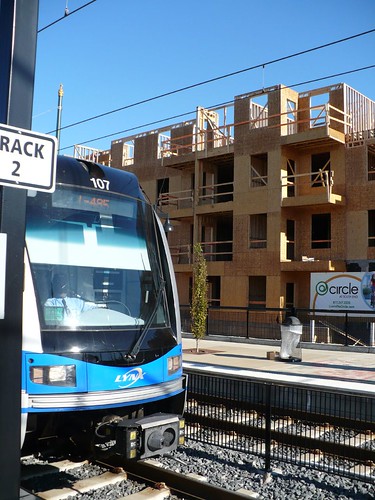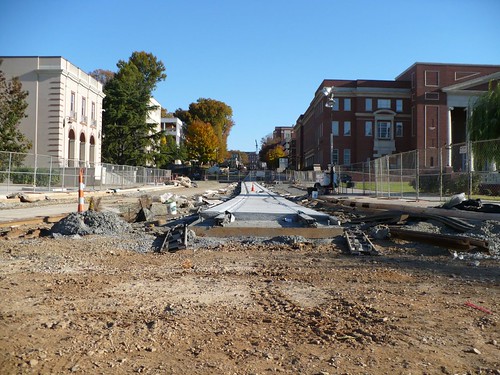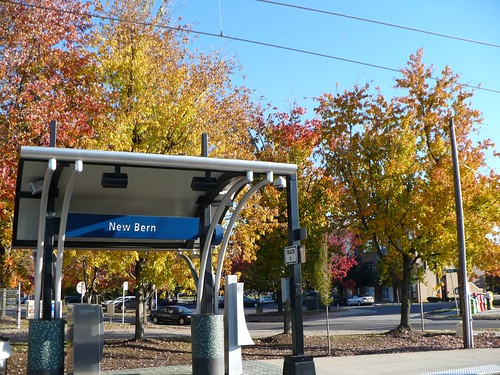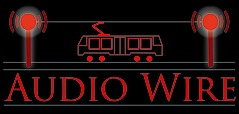Detroit wants to build a big rail transit system. This is a variation on "silver bullet" thinking where Detroit will build light rail on Woodward and suddely life will be pumped into the city. It's possible I guess. But while that strategy might be appropriate for higher growth locations like Columbus, I don't think it is where declining cities like Detroit need to be spending their money. Detroit has much higher priority needs than this.Perhaps this was made for greater discussion today by an article about Buffalo's light rail line, which is one of the new light rail lines that was built after the 1981 light rail return spark in San Diego. Buffalo was one of the cities that was low growth building new transit versus many of the high growth regions. Expansion also was stalled by politics and a lack of priority. Extensions have been on the books for a while and as of now, they total over $1 billion.
After San Diego, the class of the late 80's light rail included Portland, Sacramento, San Jose, and Buffalo. All of these lines have been successes in some ways and failures in others. San Jose for instance runs straight up the corridor it should, but the land use decisions along the line and its slow speed perception have doomed it so far too low ridership compared to peer lines. But we've learned a lot since then about focusing development, ridership induction, and urban design.
One thing those lines did that we know better about today is that they were designed to bring people from the suburbs to the Center City acting as extended parking lot. The lines that have succeeded the best today are those which connect multiple places and destinations. An example of this is Denver which just opened its southeast corridor just a few years ago which connects the Tech Center, Multiple Universities and downtown Denver. It has similar ridership to the Houston light rail line which connects downtown with the biggest medical center complex in the world. They both attract similar ridership with similar counts of jobs even though the lines have different distances (numbers on this are forthcoming).
The lesson from this is that if Detroit or Buffalo as shrinking/low growth cities are looking to bring people from the suburbs to downtown and hope that the line works without combining every other planning and infrastructure tool, it will be doomed to fail. A key to making expanding transit work on major corridors is the connection of destinations as well as a focusing program on bolstering those destinations.
One of the major mistakes that Buffalo made in its planning and subsequent allocation of funding was that it didn't take the line out to the University which was just a few miles further away. Cleveland, which is a city that is in a similar situation as a low growth city has made the Euclid Corridor their priority and have recently redone the whole street with BRT. They have also invested heavily with new public infrastructure and civic buildings. Obviously you know where I stand on the technology but the investment infusion and focus is something Cleveland did right. This is in stark contrast to the waterfront line which they built and just waiting for things to happen. They did not. Another simple improvement Cleveland could also do is move the Shaker Heights line further out a mile or two into a major suburban job center connecting that center with downtown with rapid transit.
So if you are a place like Detroit, Buffalo, or Cleveland which have a negative or low growth outlook, if there is a high capacity corridor that is ripe for investment, just holding back on the transit is not going to solve anything. In fact, you're taking away an organizing tool from the toolchest and increasing your longer term city and transit operating costs which all too often in these cities means service cuts, especially with a high cost energy future.
Weak market cities need those destination connections and a reason to organize or else there is likely to be a vacuum and development will happen in the business as usual sprawl fashion instead of focusing it making things even worse. Just because a city is low or slow growth doesn't mean development doesn't happen. The important thing is to be more fiscally conservative in your investments that promote new development. The long term viability of the city depends on creating value and not spending money on frivolous infrastructure such as road or water extensions that will make life even worse further down the road.
Of course these need to be long term strategies instead of short term fixes. Just building a light rail line and stepping back only works in Sim City. But if we're serious about helping these cities out, giving them the investment tools and pushing them to make the right investment decisions will go a long way towards a better livable environment, reductions in energy consumption, and long term fiscal strength.



